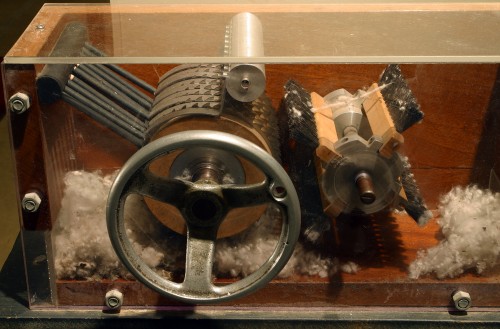The cotton industry is no different than any other industry. There are titans, and there are upstarts. No matter which end of the spectrum your company falls on, every one has the same goal: to swallow up market share in their respective commercial enterprise. For the titan, that means holding on and growing, and for the upstart that means tackling the unenviable task of stealing that market share David vs. Goliath-style.
Get ready for the inevitable buzzword
Sure, “disruptive innovation” sounds great, but what does it really mean? In a nutshell, it means unleashing a product or service that alters, forever, how we engage in the world around us. Think of Twitter, an iPad, or even something as seemingly simple as a Swiffer. These types of products are game-changers, simply because users are presented with a product that didn’t exist, but that becomes integrated—and invaluable—within their daily life over time.
At the heart of disruptive innovation are products or services that are simple, economical, and convenient. But when you’re developing products along these guidelines, where do you start? Here are six techniques to consider for your next product brainstorm:
1. Become your customer
Any market research has to start on the ground floor, and the ground floor for most companies is the consumer. You’ll never create a groundbreaking product without looking at your business line through the eyes of your intended customer, and hunting for the gaps that exist in their everyday lives. The beauty of this is that, at heart, we’re all customers. Now you just have to consciously think like one.
2. Start innovating by collaborating
Most jobs are lonely, with heads locked on screens and fingers punching keyboards. But working in silos like this does not inspire innovation. Interaction does. Within your company, one of the easiest ways to piece together a disruptive puzzle is by bringing together employees from different disciplines. Throwing scientists, engineers, and researchers in a room with marketers, salespeople, and management might uncover product or service chasms you haven’t considered.
3. Move your best ideas from paper to production
There’s a reason that the saying “paralysis by analysis” is so popular. Brainstorming, of course, is fun. But at some point, an idea must become tangible to make a difference in the market. Moving an idea—as half-baked as it may seem—into production carries with it many sacrifices, ranging from cost to manpower. Just by choosing to move forward with your strongest ideas, you’re halfway home to that risk paying off big, like most successful disrupters do.
4. Try, then try again
Trial and error is always behind every success story. But the inverse of that fact also holds a definitive truth: you will fail at times, too. Many great innovators have failed with some of their ideas—or with early iterations of an idea that later hit it big. How many times have you heard an entrepreneur or inventor say they learned more from their failures than their successes? Those iterations are what breed innovations.
5. Look at what’s right under your nose
Revisiting your product line is often a great way to uncover innovative disrupters. Market research, and the subsequent consumer data about how your product is used, will show how your customers are engaging with your products, and how you can tweak them to have more impact. Remember, the best innovations improve your customers’ lives, and become indispensable. Could some of your products be just a fraction off the bulls-eye?
6. Persistence pays off
Here’s something else that stands behind most achievements: a refusal to give up. While this relies on attitude more than execution, that mindset plays a critical role in being ahead of one’s time, or struggling just to catch the pack. For every great innovator there’s a thousand who gave up too soon. Remember that when production becomes a grind, and you face inevitable setbacks.
It isn’t easy being a pioneer
While the most innovative industries create life-altering products, they also suffer from great expectations. Apple is an obvious example; if they don’t launch an entirely updated iPhone each fall, they’re accused of falling behind, or of running out of ideas. Heavy is the ingenious head that wears the crown. In the end, though, that burden is worth it. By continually looking at ways to disrupt the market, your customers will be more appreciative of the products you place in their hands—and you might just give them something they didn’t know they couldn’t live without.
To learn more about cotton products that disrupted the market, download our white paper entitled “Game Changers: 8 Cotton Products that Impacted the World.”

